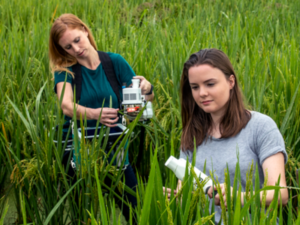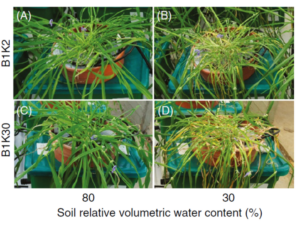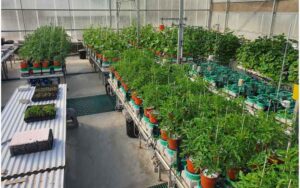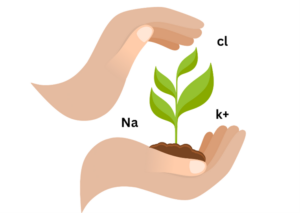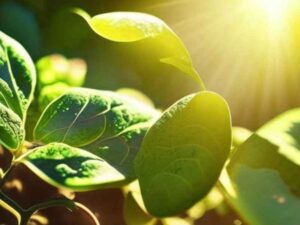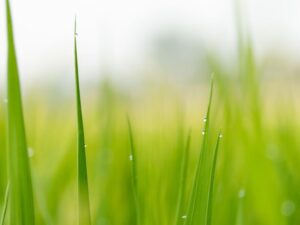What is plant physiology and why is it important?
Plant physiology is a branch of botany that focuses on the study of plant function and how plants grow, develop and reproduce. It encompasses all aspects of plant life, from the molecular and cellular level to the interactions of plants with their environment. Understanding plant physiology is essential to improving crop production and developing new plant-based products.
Plant phenotyping refers to the assessment and analysis of various observable traits and characteristics of plants. These traits can include the plant’s physical attributes, such as height, leaf area, color, and shape, as well as physiological and biochemical properties, such as photosynthetic efficiency, nutrient content, and disease resistance. Plant phenotyping plays a crucial role in understanding plant growth, development, and responses to environmental factors, ultimately aiding in crop improvement, agricultural practices, and ecological studies.
What Are the key benefits of Plant Physiology?
One of the key areas in plant physiology is photosynthesis. Photosynthesis is a fundamental biological process that enables plants, algae, and some bacteria to convert sunlight, carbon dioxide, and water into glucose (a simple sugar) and oxygen. This process plays a crucial role in sustaining life on Earth, as it serves as the primary mechanism for energy capture and storage, while also generating the oxygen we breathe. Photosynthesis takes place within specialized organelles called chloroplasts, primarily located in the cells of plant leaves. Chloroplasts contain a pigment called chlorophyll, which gives plants their characteristic green color. The process can be divided into two main stages: the light-dependent reactions and the light-independent reactions (also known as the Calvin cycle).
What is the light-dependent reactions?
During the light-dependent reactions, chlorophyll molecules in the chloroplasts absorb light energy, typically in the blue and red regions of the electromagnetic spectrum. This energy excites the electrons within the chlorophyll, initiating a series of electron transport chain reactions. As electrons move through the chain, energy is released and utilized to generate ATP (adenosine triphosphate), a molecule that stores and transfers energy within cells. Simultaneously, the energy released during the electron transport chain is harnessed to split water molecules, releasing oxygen as a byproduct. This process is known as photolysis. The electrons from water are then used to replace those lost from the chlorophyll molecules, ensuring their continuous activity.
What is the The light-independent reactions?
The light-independent reactions, or the Calvin cycle, occur in the stroma of the chloroplasts. In this stage, the energy captured during the light-dependent reactions is utilized to convert carbon dioxide molecules into glucose. The process begins with the fixation of carbon dioxide, as the enzyme Rubisco (ribulose-1,5-bisphosphate carboxylase/oxygenase) catalyzes the incorporation of carbon dioxide into a compound called ribulose-1,5-bisphosphate (RuBP). The resulting molecule is unstable and breaks down into two molecules of phosphoglycerate (PGA). Through a series of enzyme-catalyzed reactions, PGA is converted into glyceraldehyde-3-phosphate (G3P), a three-carbon compound. Some G3P molecules are used to regenerate RuBP, allowing the Calvin cycle to continue, while others are used to synthesize glucose and other carbohydrates. The process of glucose synthesis requires energy in the form of ATP and electrons supplied by the coenzyme NADPH (nicotinamide adenine dinucleotide phosphate).
The glucose produced during photosynthesis serves as the primary source of energy for plants and other organisms that consume plants. It can be stored in various forms, such as starch in plant cells, providing a reservoir of energy that can be utilized during times of limited sunlight, such as at night or during winter months.

In addition to glucose production, photosynthesis plays a vital role in the global carbon cycle. By absorbing carbon dioxide from the atmosphere, plants help regulate its concentration, mitigating the effects of climate change. Photosynthesis also contributes to the production of oxygen, as the release of oxygen during the light-dependent reactions sustains the atmospheric oxygen levels necessary for aerobic respiration in living organisms.
In summary, photosynthesis is a complex biochemical process that enables plants, algae, and certain bacteria to convert sunlight, carbon dioxide, and water into glucose and oxygen. This process provides organisms with the energy necessary for growth and survival, while also regulating carbon dioxide levels and producing oxygen in the atmosphere. The significance of photosynthesis extends far beyond individual organisms, as it plays a central role in maintaining the balance of life on Earth. Another important area in plant physiology is respiration.
What is the role of plant respiration?
Plant respiration is a vital biological process that occurs in plant cells, enabling them to break down organic molecules and release energy for various cellular activities. Similar to respiration in animals, plant respiration involves the conversion of glucose and oxygen into carbon dioxide, water, and energy in the form of adenosine triphosphate (ATP). Plant respiration can be divided into two main types: aerobic respiration and anaerobic respiration. Aerobic respiration is the most common form and requires the presence of oxygen, while anaerobic respiration occurs in the absence of oxygen.
How Does Aerobic Respiration Work?
Aerobic respiration in plants takes place within specialized organelles called mitochondria. The process begins with the breakdown of glucose, which is obtained through photosynthesis or acquired from stored carbohydrates. During glycolysis, glucose molecules are broken down into two molecules of pyruvate. This process generates a small amount of ATP and NADH (nicotinamide adenine dinucleotide), a molecule that carries high-energy electrons. The pyruvate molecules produced during glycolysis enter the mitochondria, where they undergo further processing through the Krebs cycle, also known as the citric acid cycle or tricarboxylic acid (TCA) cycle. During this cycle, pyruvate is broken down into carbon dioxide, releasing additional energy in the form of ATP, NADH, and another electron carrier called FADH2 (flavin adenine dinucleotide).
The NADH and FADH2 molecules produced in the Krebs cycle then enter the electron transport chain, a series of protein complexes embedded in the mitochondrial membrane. As electrons pass through the chain, energy is released and utilized to pump protons across the membrane, creating an electrochemical gradient. This gradient is harnessed by ATP synthase, an enzyme that synthesizes ATP from adenosine diphosphate (ADP) and inorganic phosphate (Pi). The process of ATP synthesis is referred to as oxidative phosphorylation.
The final step of aerobic respiration is the combination of electrons, protons, and oxygen to produce water. This occurs in the presence of oxygen and is referred to as the electron transport system. The oxygen serves as the final electron acceptor, allowing the process to continue and ensuring the proper functioning of aerobic respiration.
In situations where oxygen is limited or unavailable, plants can resort to anaerobic respiration. Anaerobic respiration occurs in specialized plant tissues, such as submerged roots or waterlogged soil, where oxygen levels are low. In anaerobic conditions, plants undergo a process known as fermentation. This process involves the partial breakdown of glucose, resulting in the production of ethanol or lactic acid, along with a small amount of ATP. Although less efficient than aerobic respiration, fermentation allows plants to generate some energy in oxygen-deprived environments.
How Does Plant Respiration Relate to Photosynthesis?
Plant respiration is an ongoing process that occurs continuously in all living plant cells, including roots, stems, leaves, and flowers. The rate of respiration can vary depending on factors such as temperature, light intensity, and plant metabolic activity. For instance, active growth and reproductive stages often lead to increased respiration rates.
While respiration consumes oxygen and produces carbon dioxide, it should not be confused with photosynthesis, which consumes carbon dioxide and produces oxygen. These two processes, respiration and photosynthesis, occur simultaneously in plants and form a balanced cycle that maintains the overall balance of gases in the atmosphere.
In conclusion, plant respiration is a crucial metabolic process that converts glucose and oxygen into carbon dioxide, water, and ATP. It provides the necessary energy for plant growth, maintenance, and reproduction. Aerobic respiration occurs in the presence of oxygen within mitochondria, while anaerobic respiration occurs in the absence
How do plants transport water and nutrients throughout their tissues?
Plants have a remarkable ability to transport water and nutrients throughout their tissues, ensuring proper growth, development, and survival. This intricate process is made possible through two primary mechanisms: the movement of water through the plant’s vascular system, and the uptake and transport of nutrients via roots.
Water movement in plants primarily occurs through a specialized network of tissues known as the xylem. The xylem consists of interconnected cells that form long, hollow tubes, extending from the roots to the leaves and other aerial parts of the plant. This system functions as a conduit for water transport, driven by a process known as transpiration.
How Does Transpiration Work?
Transpiration is the loss of water vapor from the plant’s leaves through tiny openings called stomata. As water evaporates from the leaf surface, it creates a negative pressure gradient within the xylem, resulting in a pull on the column of water in the xylem vessels. This negative pressure, also known as tension, draws water upward from the roots, akin to water being drawn up through a straw.
The cohesion-tension theory explains the mechanism behind this process. It suggests that water molecules in the xylem form cohesive bonds with each other due to their polar nature. As water is pulled upward, the cohesive forces between the water molecules enable a continuous column of water to be maintained from the roots to the shoots. This cohesive property of water, combined with the tension created by transpiration, facilitates the upward movement of water in plants.
Roots play a vital role in the uptake of water and nutrients from the soil. They possess root hairs, tiny outgrowths that significantly increase the surface area of the root system, allowing for enhanced absorption. Water uptake occurs through a process called osmosis, whereby water moves from areas of lower solute concentration (in the soil) to areas of higher solute concentration (inside the plant’s root cells).

How Do Plants Transport Nutrients?
The movement of nutrients, such as minerals and ions, from the soil into the plant also involves various transport mechanisms. These nutrients are typically present in the soil solution surrounding the root hairs. Plants employ active transport processes to uptake essential nutrients against concentration gradients. This active transport requires energy and involves specialized protein pumps embedded in the cell membranes of root cells. Once inside the root cells, nutrients can move through the plant’s tissues via two pathways: the symplastic pathway and the apoplastic pathway. In the symplastic pathway, nutrients move from cell to cell via plasmodesmata, small channels that connect adjacent plant cells. This movement occurs through cytoplasmic streaming, allowing nutrients to traverse the entire plant via interconnected cells.
In the apoplastic pathway, nutrients travel through the extracellular spaces between plant cells, aided by the plant’s cell walls. However, the apoplastic pathway is typically interrupted when nutrients reach the endodermis, an inner layer of the root composed of tightly packed cells. The endodermis acts as a selective barrier, regulating the movement of substances into the vascular system of the root.
Once inside the vascular tissues of the root, nutrients are transported upward along with the water in the xylem vessels. This process relies on the transpiration stream and the cohesive forces between water molecules, ensuring that nutrients are distributed throughout the plant.
What Ensures Optimal Growth and Functioning in Plants?
In conclusion, the transport of water and nutrients in plants involves a complex interplay of mechanisms. Water is primarily transported through the xylem via transpiration, driven by the cohesion-tension theory. Nutrients, on the other hand, are taken up by roots through osmosis and actively transported into the plant’s tissues. The simplistic and apoplectic pathways allow for the movement of nutrients within the plant, ultimately ensuring that water and essential substances reach all parts of the plant for optimal growth and functioning.
In addition to these basic processes, plant physiology encompasses a wide range of topics, including plant growth and development, plant responses to environmental stresses such as drought, heat, and cold, and interactions between plants and other organisms, such as insects and pathogens. .
Why is understanding plant physiology important for crop improvement?
Understanding plant physiology is essential for developing strategies to improve crop productivity and developing new plant-based products. For example, by understanding the mechanisms of photosynthesis and respiration, researchers can develop crops that are more efficient at converting light energy into biomass. Similarly, by understanding the mechanisms of plant response to environmental stresses and using advanced technological aids such as our PlantArray system, researchers can develop crops that are more resistant to drought, heat and cold. In recent years, advances in molecular biology and genomics have revolutionized the field of plant physiology. Researchers are now able to study the function of individual genes and proteins, allowing for a deeper understanding of the mechanisms underlying plant physiology. This knowledge led to the development of new technologies to improve the crop.
Advancements in technology and the integration of various scientific disciplines have revolutionized plant phenotyping. Traditional methods of phenotyping, which relied on visual inspection and manual measurements, were time-consuming, labor-intensive, and limited in their ability to capture detailed information. However, with the advent of high-throughput phenotyping platforms and non-destructive imaging techniques, researchers can now collect data from large populations of plants rapidly and accurately.
In conclusion, plant physiology is an essential field of research essential to understanding plant function and improving crop yield. The progress in this field has led to the development of new and advanced technologies such as the technologies provided by Plant-Ditech that respond to the most urgent challenges facing agriculture and food security today.
Why Plant-Ditech as your best automatic plant phenotyping solution?
When it comes to selecting a plant phenotyping solution, researchers should look no further than Plant- Ditech. With its cutting-edge technology, comprehensive features, and unmatched performance, Plant- Ditech stands out as the ultimate choice in the competitive market.
Another compelling reason to choose Plant-Ditech is its high-throughput and non-destructive data collection. With the ability to capture data from large populations of plants rapidly, researchers can save valuable time and resources. Furthermore, the non-invasive nature of Plant-Ditech’s imaging techniques ensures that plants remain undisturbed throughout the phenotyping process, preserving their growth and development for further experimentation and research.
Moreover, Plant-Ditech takes pride in its commitment to customer satisfaction. The company provides exceptional technical support, ensuring that researchers receive prompt assistance whenever needed. Whether it’s troubleshooting, software updates, or training, Plant-Ditech’s dedicated support team is readily available to address any concerns and ensure a seamless user experience.
In conclusion, researchers should choose Plant-Ditech as their preferred plant phenotyping solution due to its unmatched accuracy, comprehensive range of measurements, scalability, user-friendliness, and exceptional customer support. By opting for Plant-Ditech, researchers can embark on their phenotyping
studies with confidence, knowing they have a reliable and advanced tool at their disposal to unlock the secrets of plant biology and contribute to scientific advancements.
In conclusion, plant physiology is an essential field of research essential to understanding plant function and improving crop yield. The progress in this field has led to the development of new and advanced technologies such as the technologies provided by Plant-Ditech that respond to the most urgent challenges facing agriculture and food security today.
Are you already subscribed to the newsletter? If not – click here and you will receive all the updates and innovation on behalf of Plant-Ditech – https://plant-ditech.us16.list-manage.com/subscribe?u=8a982687f8d40f5421ebe33a1&id=cba3142c8d

